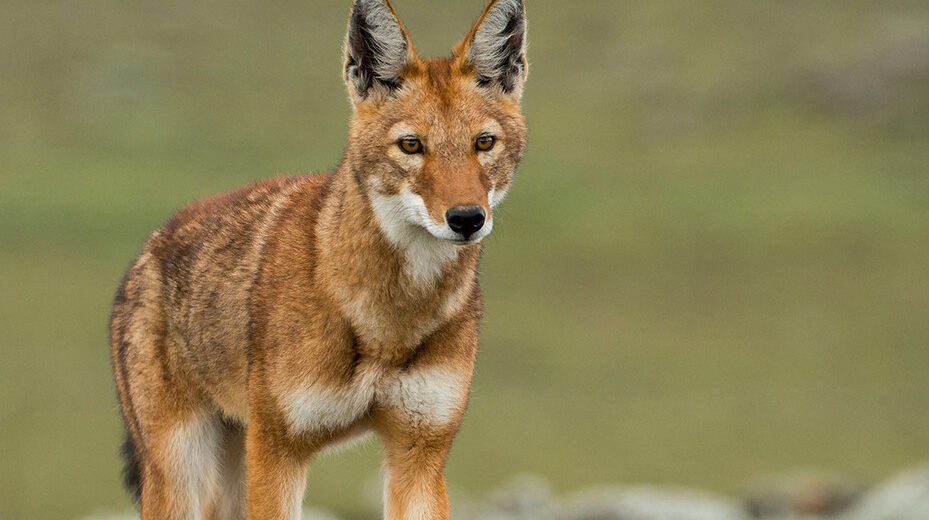
Between the farming practices of humans and rampant diseases like rabies and distemper, the Ethiopian wolf is declining rapidly. Their numbers continue to plummet regularly. Since 2008, their population has declined by approximately 30%! They are listed as Endangered by the IUCN. This is due to habitat loss, hunting, trapping, war and civil unrest, invasive species, and disease.
First the Stats…
Scientific name: Canis simensis
Weight: Up to 42 lbs.
Length: Up to 3 feet, plus their up to 15.75 inch tail
Life span: Up to 10 years
Now on to the Facts!
1.) These wolves are found in the Afro-alpine regions of Ethiopia and Eritrea.
2.) The Ethiopian Wolf is also known as: the Simien jackal, Abyssinian wolf, Simien fox, the Ethiopian jackal, red fox, red jackal, Abyssinian dog, and cuberow.
3.) Since September 2003, nearly 40 Ethiopian wolves have died from rabies in the Bale Mountains. Another approximately 25 are missing and presumed dead. This area is home to only a few of these endangered critters! Scientists believe there are less than 197 left on earth!
4.) The Ethiopian Wolves prey on rodentia like hares, giant mole rats, and common grass rats. They’ll also eat eggs, young ungulates (hoofed animals), goslings, and they will even eat carrion.
5.) These canids are typically solitary hunters but will occasionally hunt in packs and form packs to defend territories.
But wait, there’s more on the Ethiopian wolf!
6.) Incidences of Ethiopian wolf-dog hybridization have been recorded in Bale’s Web Valley. At least 4 hybrids were identified and sterilized in the area. Although hybridization has not been detected elsewhere, it could pose a threat to the integrity of the wolf’s population.
7.) The rivalry among the packs can increase when it is time to mate. It is estimated that more than half of all successful conceptions are from a male outside of the pack.
Did you know…?
Wolves can hear up to 20 times better than humans!
8.) They live in groups that usually have about 6 adults and then a group of pups which varies with every litter.
9.) These wolves are diurnal (active during the day).
10.) Ethiopian wolves are monogamous (mate with one female exclusively).
But wait, there’s still more on the Ethiopian wolf!
11.) Ethiopian wolves are the only known wolf that lives in Africa.
12.) Ethiopians call these woles ‘ky kebero’, which means red jackal.
Now a Short Ethiopian Wolf Video!
Also, check out the Critter Science YouTube channel. Videos added frequently!
Want to suggest a critter for me to write about? Let me know here.



